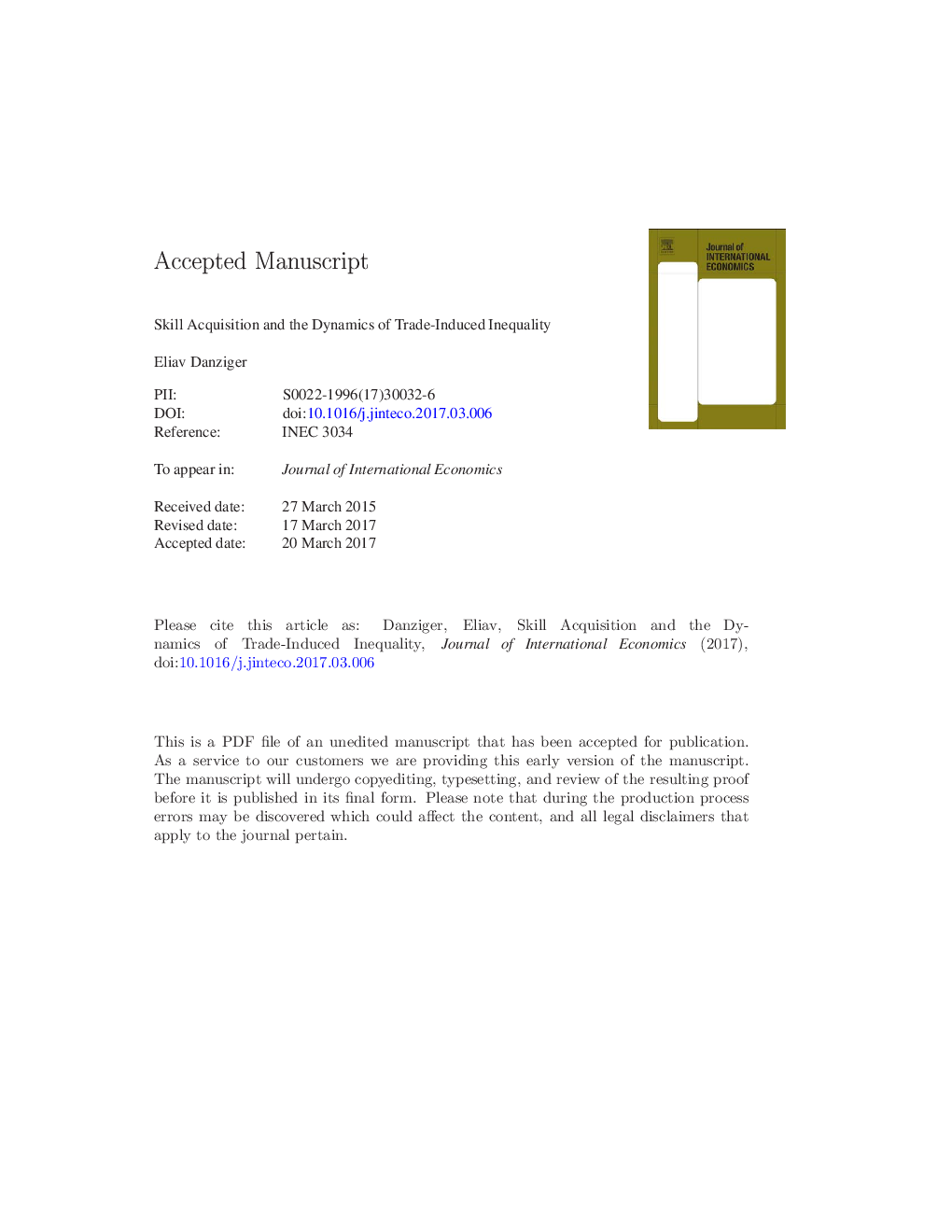| Article ID | Journal | Published Year | Pages | File Type |
|---|---|---|---|---|
| 5100882 | Journal of International Economics | 2017 | 43 Pages |
Abstract
I develop and calibrate a dynamic general-equilibrium trade model with endogenous skill demand and supply. Simulations show that removing US trade barriers would lead to aggregate gains in the United States of 4.5%. Individual workers' gains, however, depend on their education, age and birth cohort. The biggest winners, the oldest educated workers alive during trade liberalization, gain 6.7%, while their uneducated peers gain the least, only 1.2%. A major finding is that ignoring either the endogeneity of the skill supply or the post-liberalization dynamics, as the existing literature does, leads to a substantial bias in the quantitative assessment of trade liberalization.
Related Topics
Social Sciences and Humanities
Economics, Econometrics and Finance
Economics and Econometrics
Authors
Eliav Danziger,
